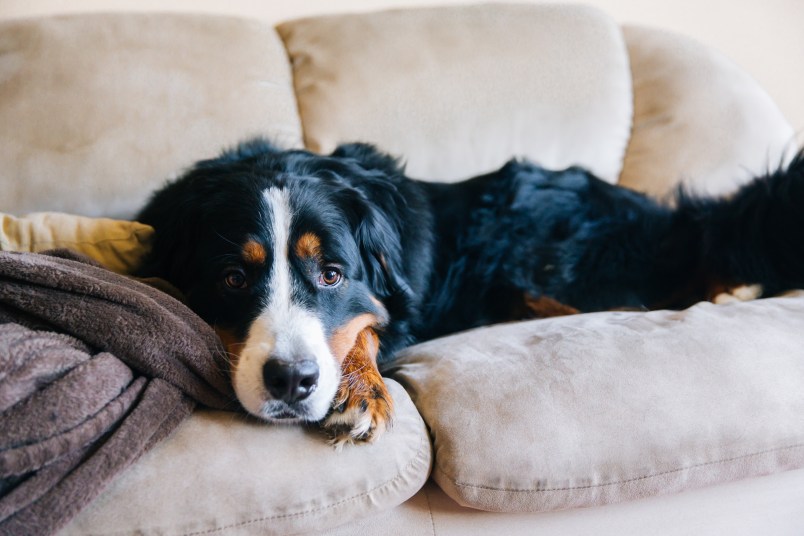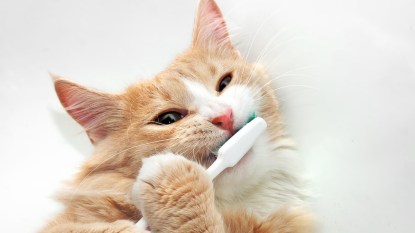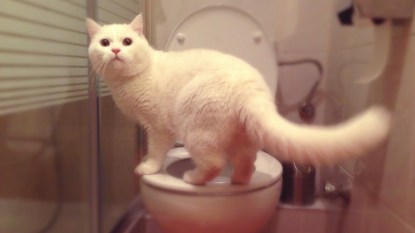Pets Post COVID-19: How to Prevent Separation Anxiety

Our pets have proven to be the ultimate companions over the past couple of months and we’re sure the feeling is mutual.
Many Americans have taken this opportunity to welcome a new pet into their home, due to having more time to train and settle their new family member in.
But now, with restrictions starting to ease and life slowly returning to normal, many will start to head back into their workplaces, leaving their pets at home alone for most of the day.
Although the cats in the United States are probably ready for their humans to return to work, dogs don’t seem to tire of their owner’s company and it’s not uncommon for them to suffer from anxiety when left alone, especially if they are used to having you around all time.
“For any animal that already suffers from anxiety, the transition from working from home back into the workplace will be difficult,” says PETstockvet, Dr. Sasha Nefedova.
“Even for pets that have not shown any pre-existing signs of anxiety, being with their pet parent for every hour of the day to suddenly only morning and nights are likely to take an emotional toll on your pet,” she adds.
Signs of Anxiety
“Symptoms of anxiety in pets include trembling, licking of lips, increased drooling or salivation, pacing, shaking, or a decrease in appetite,” says Dr. Nefedova.
How to Reduce The Risk of Separation Anxiety
If you’re worried about how your dog will cope with you returning to work or spending less time at home, there are some simple things you can do now to make the transition easier for both parties.
“While you are still working from home, there are a few home remedies you can implement to help reduce the risk of separation anxiety once you return to your workplace, such as allocating quiet time, establishing a routine and playing music,” advises Dr. Nefedova.
“One of the best ways to reduce the risk of separation anxiety in pets is allocating alone time. Placing your dog or cat in a quiet room away from you and your workspace, such as the laundry or in the backyard, for an hour twice a day will help make the transition to your sudden absence much easier on them. Try and ignore attention seeking behaviors they may exhibit during this time and reward the good behaviors.”
Establish a routine.
Dr. Nefedova also recommends establishing a strong daily routine to ensure your pet can have a sense of safe familiarity when you return to the office. This includes eating, interactive playtime, and daily exercise.
“Playing with your pet or taking your dog for a walk before or after work will help establish a routine that they are familiar with when you return to your workplace, rather than expecting a walk or to be played with at lunch time,” she says.
“Exercising and playing together daily is also a great way to develop the bond between you and your pet, as well as calm them to reduce their anxiety.”
Keep pets entertained.
An easy and effective way to keep your dog, cat, or rabbit entertained for hours is to use enrichment toys such as laser pointers, Kongs, cat wands, or food puzzles.
“Giving your pet a ‘job’ to do will keep them mentally stimulated and help manage their anxiety or boredom,” says Dr. Nefedova. “However, it’s important that you identify the cause of their anxiety so you’re not at risk of reinforcing the issue,” she adds.
Some pets with anxiety respond well to calming music being played, as it works as an effective distraction from silence and soothes their nerves.
“While you are still working from home, it’s the perfect time to test this method. If they respond well by sleeping or appearing to be calm, then leave some soft music playing throughout the day when you return to the office,” says Dr. Nefedova.
“Pets have proven to have many benefits on your mental wellbeing, such as improving feelings of loneliness and physical health, such as decreasing blood pressure so it’s important to also take their health into consideration during this unfamiliar transition.”
“If your pet’s anxiety worsens, speak to your vet about alternatives such as medication to assist with their condition.”
This article originally appeared on our sister site, Homes to Love.













